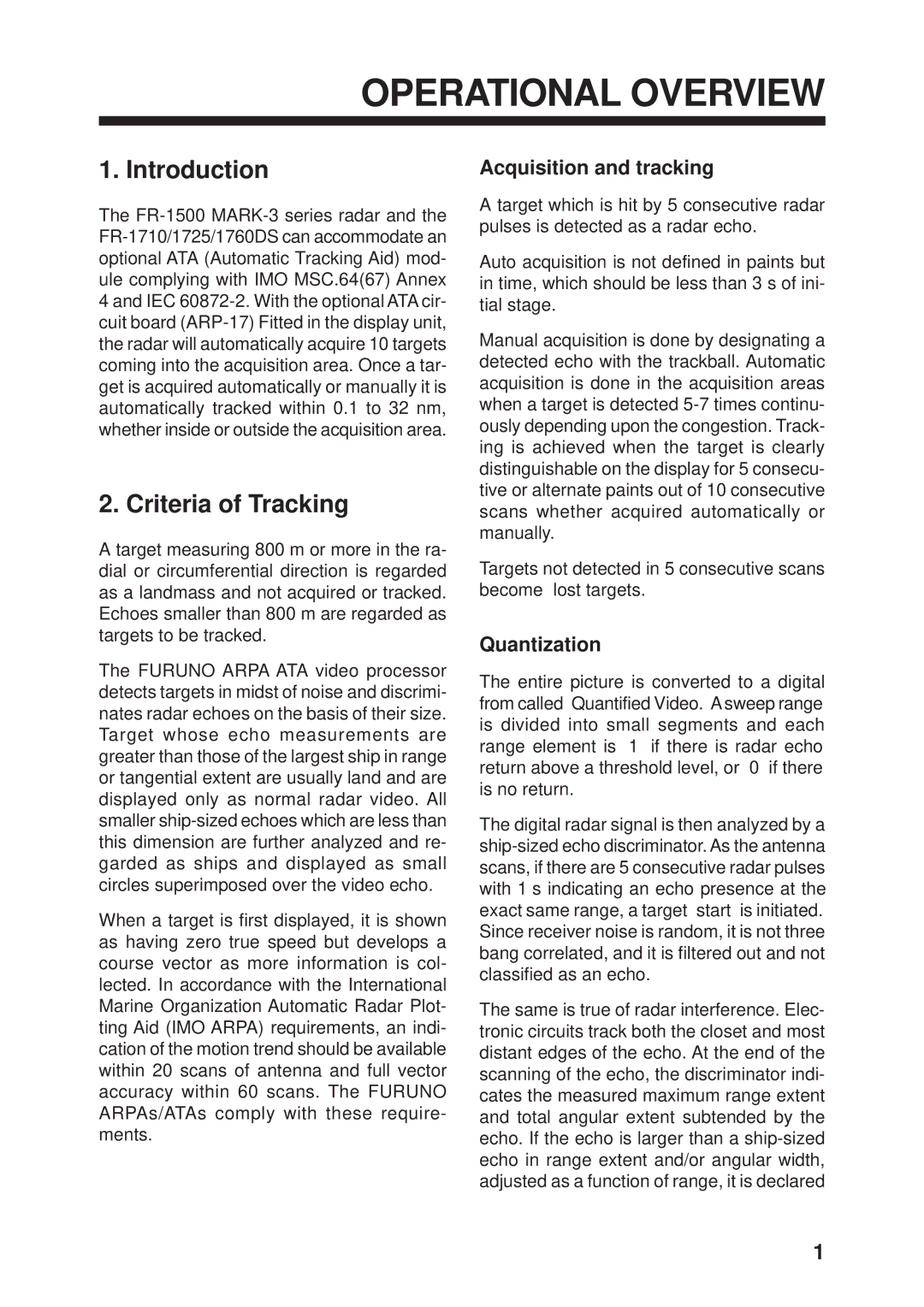OPERATIONAL OVERVIEW
1. Introduction
The
2. Criteria of Tracking
A target measuring 800 m or more in the ra- dial or circumferential direction is regarded as a landmass and not acquired or tracked. Echoes smaller than 800 m are regarded as targets to be tracked.
The FURUNO ARPA ATA video processor detects targets in midst of noise and discrimi- nates radar echoes on the basis of their size. Target whose echo measurements are greater than those of the largest ship in range or tangential extent are usually land and are displayed only as normal radar video. All smaller
When a target is first displayed, it is shown as having zero true speed but develops a course vector as more information is col- lected. In accordance with the International Marine Organization Automatic Radar Plot- ting Aid (IMO ARPA) requirements, an indi- cation of the motion trend should be available within 20 scans of antenna and full vector accuracy within 60 scans. The FURUNO ARPAs/ATAs comply with these require- ments.
Acquisition and tracking
A target which is hit by 5 consecutive radar pulses is detected as a radar echo.
Auto acquisition is not defined in paints but in time, which should be less than 3 s of ini- tial stage.
Manual acquisition is done by designating a detected echo with the trackball. Automatic acquisition is done in the acquisition areas when a target is detected
Targets not detected in 5 consecutive scans become “lost targets.”
Quantization
The entire picture is converted to a digital from called “Quantified Video.” A sweep range is divided into small segments and each range element is “1” if there is radar echo return above a threshold level, or “0” if there is no return.
The digital radar signal is then analyzed by a
The same is true of radar interference. Elec- tronic circuits track both the closet and most distant edges of the echo. At the end of the scanning of the echo, the discriminator indi- cates the measured maximum range extent and total angular extent subtended by the echo. If the echo is larger than a
1
